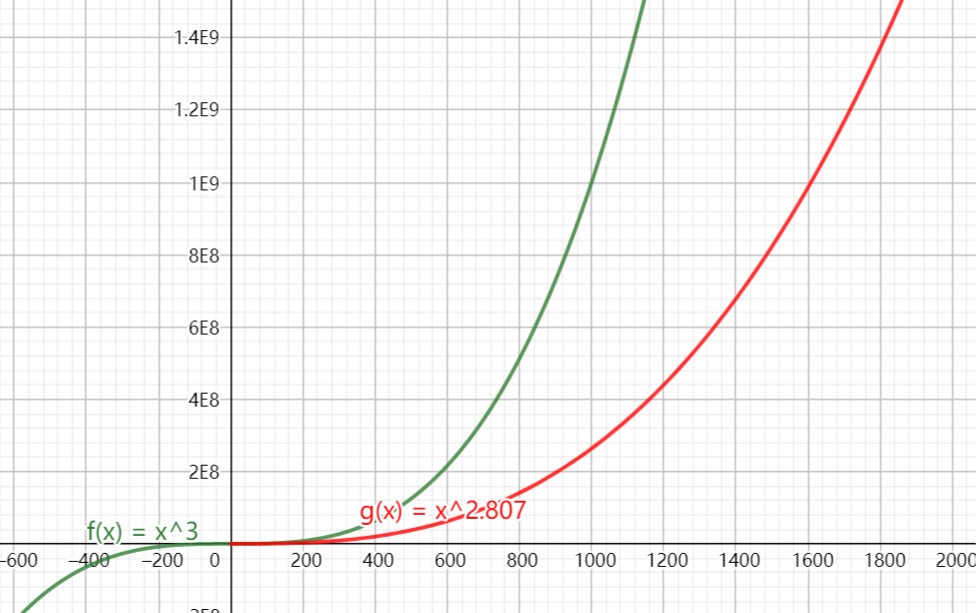假装游欧洲之Bruges
By Long Luo
建筑是凝固的音乐,斑驳的外墙演绎着历史的旋律。
布鲁日是一座被时间静止的美丽小城。漫步在布鲁日的小巷中,脚踏着青石板路,仿佛走入了中世纪。满眼是砖红色屋顶,哥特式的长窗,高高伫立的钟楼,还有墙壁上随处可见的洛可可画作,你依然能感受到当年布鲁日的繁荣和富庶。
布鲁日是一座被运河环绕的水城,曾经是欧洲贸易的中心,是当时全世界最富有的城市之一。整个欧洲的货物都在这里汇集。富裕起来的商人们重塑了这座城市,建造了一栋栋流传至今的教堂,市政厅,钟楼…



By Long Luo
建筑是凝固的音乐,斑驳的外墙演绎着历史的旋律。
布鲁日是一座被时间静止的美丽小城。漫步在布鲁日的小巷中,脚踏着青石板路,仿佛走入了中世纪。满眼是砖红色屋顶,哥特式的长窗,高高伫立的钟楼,还有墙壁上随处可见的洛可可画作,你依然能感受到当年布鲁日的繁荣和富庶。
布鲁日是一座被运河环绕的水城,曾经是欧洲贸易的中心,是当时全世界最富有的城市之一。整个欧洲的货物都在这里汇集。富裕起来的商人们重塑了这座城市,建造了一栋栋流传至今的教堂,市政厅,钟楼…



By Long Luo
众所周知,计算机系统从 \(16\) 位发展到 \(32\) 位,再从 \(32\) 位发展到 \(64\) 位,与此同时不同的数据类型也随着系统的位数增大而增大。早期的操作系统是 \(16\) 位系统,int用2字节表示,范围是-32768~32767,long用4字节表示,范围是-2147483648~2147483647;后来发展到 \(32\) 位操作系统,int用4字节表示,与long相同。
目前的操作系统已发展到 \(64\) 位操作系统,但因程序编译工艺的不同,两者表现出不同的差别:
具体在标准中,并没有规定long一定要比int长,也没有规定short要比int短,只是规定了长整型至少和整型一样长,整型至少和短整型一样长。这个规则同样适用于浮点型long double至少和double一样长,double至少和float一样长。至于如何实现要看编译器厂商。
下表所展示的是Java的8种基本数据类型的详细数据:
| 基本类型 | 大小 | 最小值 | 最大值 | 包装器类型 | 默认值 |
|---|---|---|---|---|---|
| boolean | / | / | / | Boolean | false |
| char | 2 | Unicode 0 | Unicode 2^16-1 | Character | ‘u0000’ |
| byte | 1 | -128 | 127 | Byte | 0 |
| short | 2 | -2^15 | +2^15-1 | Short | 0 |
| int | 4 | -2^31 | +2^31-1 | Integer | 0 |
| long | 8 | -2^63 | +2^63-1 | Long | 0 |
| float | 4 | IEEE754 | IEEE754 | Float | 0 |
| double | 8 | IEEE754 | IEEE754 | Double | 0 |
从上述表格中可以看出,普通工作生活中所涉及的数字都不会超过int所能表示的范围,而超过long long类型则少之又少。但是具体到一些行业或者科研中,比如天文,石油开采等,经常需要和天文数字进行打交道。举例来说,\(50!\),\(10^20\) 这种阶乘或者指数函数轻而易举就突破最大所能表示的范围。
如何表示这些超大数字以及对其进行数学运算呢?
首先需要解决的问题就是如何表示,用数据类型是不可能了,那么我们应该怎么做呢?
很容易想到的就是将超大数字拆分为一个个位进行展示,存储这些位的值就可以了。至于怎么存,可以使用string, 也可以使用list, array等。这里为了方便,我们使用string来说明及展示。 例子:1
string number = "3377733333332222";
解决了展示问题,下面我们来展示如何对超大数字进行数学运算:
让我们回到小学课堂,重温我们学习加法的第一课。回想我们是如何做加法的呢?1
2
3Input : str1 = "3333311111111111",
str2 = "44422222221111"
Output : 3377733333332222
很明显,我们是从低位开始,按位相加,直至最高位。
那么实现大数字的加法就可以很简单的分成3步: 1. 翻转每个string; 2. 从第 \(0\) 位开始依次相加到相对小的string,每位的数字是 \(sum mod 10\) ,如果有进位则进位为 \(sum / 10\); 3. 对得到的结果进行翻转。
我们直接看实现吧:1
2
3
4
5
6
7
8
9
10
11
12
13
14
15
16
17
18
19
20
21
22
23
24
25
26
27
28
29
30
31string sum_of_large_number(string num1, string num2) {
if (num1.length() > num2.length()) {
swap(num1, num2);
}
int len1 = num1.length();
int len2 = num2.length();
reverse(num1.begin(), num1.end());
reverse(num2.begin(), num2.end());
string result = "";
int carry = 0;
for (int i = 0; i < len1; i++) {
int sum = (num1.at(i) - '0') + (num2.at(i) - '0') + carry;
result.push_back(sum % 10 + '0');
carry = sum / 10;
}
for (int i = len1; i < len2; i++) {
int sum = num2.at(i) - '0' + carry;
result.push_back(sum % 10 + '0');
carry = sum / 10;
}
if (carry) {
result.push_back(carry + '0');
}
reverse(result.begin(), result.end());
return result;
}
By Long Luo
Do you remember the first time going to somewhere that you enjoyed a lot? Well I remember my first time at Chimelong Ocean Kingdom. To be honest this was my first time going to Chimelong Resort. I know what you’re probably thinking right now “wow! He hasn’t been to the before!”.
As part of our annual company team-building activity, we embarked on a day journey to Chimelong Ocean Kingdom in Zhuhai. This extraordinary adventure park is known to house one of the world’s largest aquariums, making it a must-see attraction for marine life enthusiasts like myself.
The highlight of the aquarium was the whale shark, a magnificent creature stretching over ten meters in length. It was truly awe-inspiring to witness such a gigantic, graceful creature up close. The aquarium was also teeming with an array of other aquatic life forms, each one more fascinating than the last.
For the adrenaline junkies among us, the park offered a variety of thrilling rides. The roller coasters were particularly exhilarating, their high-speed twists and turns providing a rush of excitement that left us all breathless and eager for more.
But the fun didn’t stop at thrill rides and marine life. The park was also home to an assortment of animals from the colder regions of the world. We saw penguins waddling around, Arctic wolves prowling, Arctic foxes darting about, and Arctic bears lumbering in their enclosures. Each animal was a sight to behold and added to the overall charm of the park.
Perhaps one of my favorite sections of the park was the Beluga whale and dolphin exhibit. The grace and intelligence of these creatures were captivating. The jellyfish exhibit was another unforgettable experience. Their delicate, luminescent bodies floating in the water was like witnessing an underwater ballet of lights.
In conclusion, our trip to Chimelong Ocean Kingdom was nothing short of spectacular. For a day and a half, we immersed ourselves in a world of fun, thrill, and discovery. It was a joy that transcended the usual office environment, making this team-building activity truly unforgettable. I returned home with a heart full of happiness and a camera full of memories, looking forward to the next adventure.
By Long Luo
机器学习中需要训练大量数据,涉及大量复杂运算,例如卷积、矩阵等。这些复杂运算不仅多,而且每次计算的数据量很大,如果能针对这些运算进行优化,可以大幅提高性能。
假设 \(A\) 为 \(m \times p\) 的矩阵,\(B\) 为 \(p \times n\) 的矩阵,那么称 \(m \times n\) 的矩阵 \(C\) 为矩阵 \(A\) 与 \(B\) 的乘积,记作 \(C = AB\),称为矩阵积(\(\textit{Matrix Product}\))。
其中矩阵 \(C\) 中的第 \(i\) 行第 \(j\) 列元素可以表示为:
\[ (AB)_{ij} = \sum_{k=1}^{p}{a_{ik}b_{kj}} = a_{i1}b_{1j} + a_{i2}b_{2j} + \cdots + a_{ip}b_{pj} \]
如下图所示:
假如在矩阵 \(A\) 和矩阵 \(B\) 中,\(m=p=n=N\),那么完成 \(C=AB\) 需要多少次乘法呢?
综合可以看出,矩阵乘法的算法复杂度是:\(O(N^3)\)。
那么有没有比 \(O(N^{3})\) 更快的算法呢?
1969年,Volker Strassen 提出了第一个算法时间复杂度低于 \(O(N^{3})\) 矩阵乘法算法,算法复杂度为 \(O(n^{log_{2}^{7}})=O(n^{2.807})\) 。从下图可知,\(\textit{Strassen}\) 算法只有在对于维数比较大的矩阵( \(N > 300\) ) ,性能上才有很大的优势,可以减少很多乘法计算。
\(\textit{Strassen}\) 算法证明了矩阵乘法存在时间复杂度低于 \(O(N^{3})\) 的算法的存在,后续学者不断研究发现新的更快的算法,截止目前时间复杂度最低的矩阵乘法算法是 Coppersmith-Winograd 方法的一种扩展方法,其算法复杂度为 \(O(n^{2.375})\) 。
假设矩阵 \(A\) 和矩阵 \(B\) 都是 \(N \times N (N = 2^{n})\) 的方矩阵,求 \(C = AB\) ,如下所示:
\[ \begin{aligned} A = \left [\begin{matrix} A_{11} & A_{12} \\ A_{21} & A_{22} \end{matrix} \right] \\ B = \left [\begin{matrix} B_{11} & B_{12} \\ B_{21} & B_{22} \\ \end{matrix} \right] \\ C = \left [\begin{matrix} C_{11} & C_{12} \\ C_{21} & C_{22} \\ \end{matrix} \right] \end{aligned} \]
其中
\[ \begin{bmatrix} C_{11} & C_{12} \\ C_{21} & C_{22} \end{bmatrix} = \begin{bmatrix} A_{11} & A_{12} \\ A_{21} & A_{22} \end{bmatrix} \cdot \begin{bmatrix} B_{11} & B_{12} \\ B_{21} & B_{22} \end{bmatrix} \]
矩阵 \(C\) 可以通过下列公式求出:
\[ \begin{aligned} C_{11} = A_{11} \cdot B_{11} + A_{12} \cdot B_{21} \\ C_{12} = A_{11} \cdot B_{12} + A_{22} \cdot B_{21} \\ C_{21} = A_{21} \cdot B_{11} + A_{22} \cdot B_{21} \\ C_{22} = A_{21} \cdot B_{12} + A_{22} \cdot B_{22} \\ \end{aligned} \]
从上述公式我们可以得出,计算 \(2\) 个 \(n \times n\) 的矩阵相乘需要 \(2\) 个 \(\frac{n}{2} \times \frac{n}{2}\) 的矩阵 \(8\) 次乘法和 \(4\) 次加法。
我们使用 \(T(n)\) 表示 \(n \times n\) 矩阵乘法的时间复杂度,那么我们可以根据上面的分解得到下面的递推公式:
\[ T(n) = 8 \times T(\frac{n}{2}) + O(n^{2}) \]
其中: 1. \(8T(\frac{n}{2})\) 表示 \(8\) 次矩阵乘法,而且相乘的矩阵规模降到了 \(\frac{n}{2}\)。 2. \(O(n^{2})\) 表示 \(4\) 次矩阵加法的时间复杂度以及合并矩阵 \(C\) 的时间复杂度。
最终可计算得到 \(T(n)=O(n^{log_{2}^{8}})=O(n^{3})\) 。
可以看出每次递归操作都需要 \(8\) 次矩阵相乘,而这正是瓶颈的来源。相比加法,矩阵乘法是非常慢的,于是我们想到能不能减少矩阵相乘的次数呢?
答案是当然可以!!!
\(\textit{Strassen}\) 算法正是从这个角度出发,实现了降低算法复杂度!
By Long Luo
Leetcode 172. 阶乘后的零 题解:
因为 \(n!\) 得到的数字会非常大,所以需要使用BigInteger,得到结果之后,再计算末尾 \(0\) 的数量。1
2
3
4
5
6
7
8
9
10
11
12
13
14
15
16
17
18import java.math.BigInteger;
class Solution {
public int trailingZeroes(int n) {
BigInteger nFactorResult = BigInteger.ONE;
for (int i = 2; i <= n; i++) {
nFactorResult = nFactorResult.multiply(BigInteger.valueOf(i));
}
int ans = 0;
while (nFactorResult.mod(BigInteger.TEN).equals(BigInteger.ZERO)) {
ans++;
nFactorResult = nFactorResult.divide(BigInteger.TEN);
}
return ans;
}
}
时间复杂度:\(O(n)\), 实际上应该是 \(O(n + logn)\),但 \(logn\) 很快,只有 \(O(1)\),所以 \(O(n)\).
空间复杂度:\(O(1)\)。
思路与算法:
考虑到计算阶乘末尾的每个 \(0\) 表示乘以 \(10\),那么在我们在计算 \(n!\) 时乘以 \(10\) 的次数是多少? 考虑到两个数字 \(a\) 和 \(b\) 相乘,例如,要执行 \(15 \times 24 = 360\),我们可以将其分解为:
\[ 15 \times 24 = 3 \times 5 \times 2 \times 2 \times 2 \times 3 = 360 \]
从上面可以得出,我们只需要考虑 \(2 \times 5\) 的因子有多少对。同时,因为 \(2\) 的因子数比 \(5\) 的因子数要多,所以我们只需要计算 \(1\) 到 \(n\) 的 \(5\) 的因子数有多少即可。